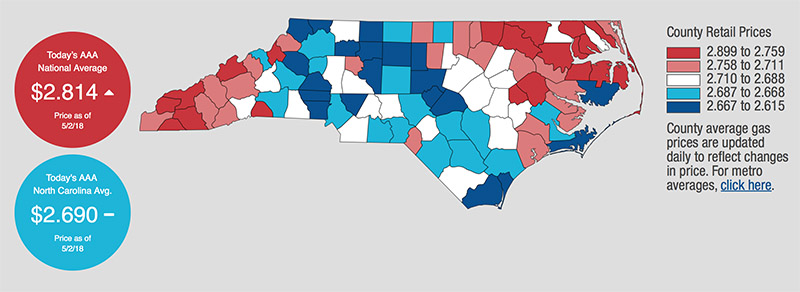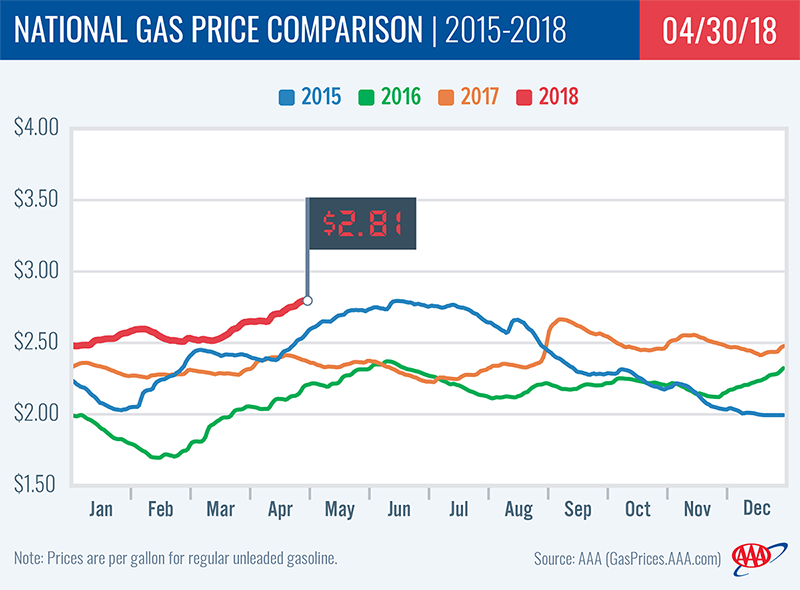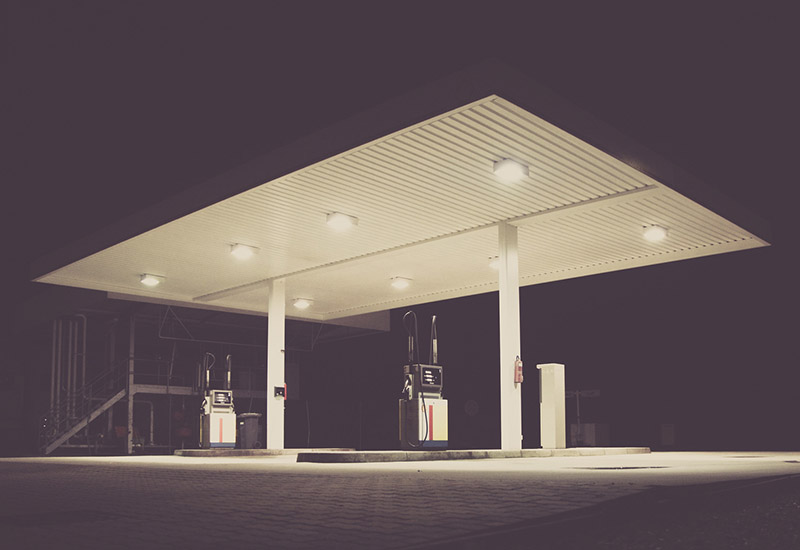As Gas Prices Hit Four-Year Record, What’s the Cause?
Cary, NC – This past April, average gasoline prices in and around Cary were about $2.65 per gallon. At the same time, gasoline prices nationwide hit their highest average since 2014.
Historic Trends in Gasoline Prices
According to data from AAA, the average gas price in the Raleigh-Cary area right now is $2.707, up from $2.543 at the start of April. This makes our local area one of the most expressive metro areas for gasoline in North Carolina, with Asheville coming close depending on different days. Outside rural counties are still experiencing the highest prices, particularly in the far West and Northeast of the state.
Nationwide prices have gotten even higher. April ended with a nationwide average of $2.81 per gallon, the highest prices have been since November 2014. But 2014 also saw prices nearly a dollar more expensive than they are now and a quick drop by the end of the year.
“Motorists have been spoiled the past few years with inexpensive gas prices,” said Tiffany Wright, AAA Carolinas spokesperson. “We expect prices to continue increasing, potentially another 10 cents, through Memorial Day and then will likely stabilize during the summer, with the understanding that if demand spikes, prices are likely to follow.”
Gas prices fluctuated between 2008 and 2014 because of a mixture of the Great Recession and global development. Gas prices fell with the financial crisis then, as domestic and global recoveries took place, prices climbed back up, reaching an average of $3.70 in the United States in April 2014. But at the same time, the development of emerging economies such as China, Russia, India and Brazil began to slow around 2010 and demand for gasoline gradually slowed down with it. By December 2014, the average national gas price in the United States was down to $2.25.
What’s Behind Current High Prices?
If gas prices both around the country and locally were so much lower by the end of 2014, and have even dipped in price at times since then, what’s the cause of the current price spike?
For one thing, April always sees higher gas prices. With the approach of Summer and the end of school, there is much higher demand from drivers. Also, oil refineries slow down production to do post-Winter maintenance at this time of the year. At that same time, refineries follow Environmental Protection Agency regulations and switch to the “Summer blend” gasoline which evaporates at a different temperature than the “Winter blend” and is more expensive.
“AAA does not expect the national gas price to be reminiscent of 2011-2014, when motorists were paying on average $3.47 a gallon,” Wright said.
But gas prices have not only starting climbing in recent months. You may remember local prices were unusually high in January and February. That was a mixture of the various hurricanes’ impact on the supply of gasoline and what appeared to be high demand at a time when most people are driving less due to the cold weather. This has led to local gas prices in 2018 starting at a higher point than typical years.
Globally, there are also several impacts on the oil market. The second and third-largest oil producers, Saudi Arabia and Russia respectively, have been cutting off excess production in an effort to get oil prices to rise. This practice started in 2016 when prices were as low as $27 a barrel and the nationwide average got below $2 per gallon at times. These impacts on the oil market, as well as Venezuela’s significantly lowered output, have caused prices to rise globally.
In the meantime, you can research the GoCary bus system or the network of greenways in Cary as a way to get around without paying for gasoline. Also, if you see a gas station advertising a relatively low price, even if your tank is not near empty, fill up there. It can save you money in the long term.
Story by Michael Papich. Photos courtesy of AAA and Markus Spiske.







Thanks.
Very informative article, Michael.